
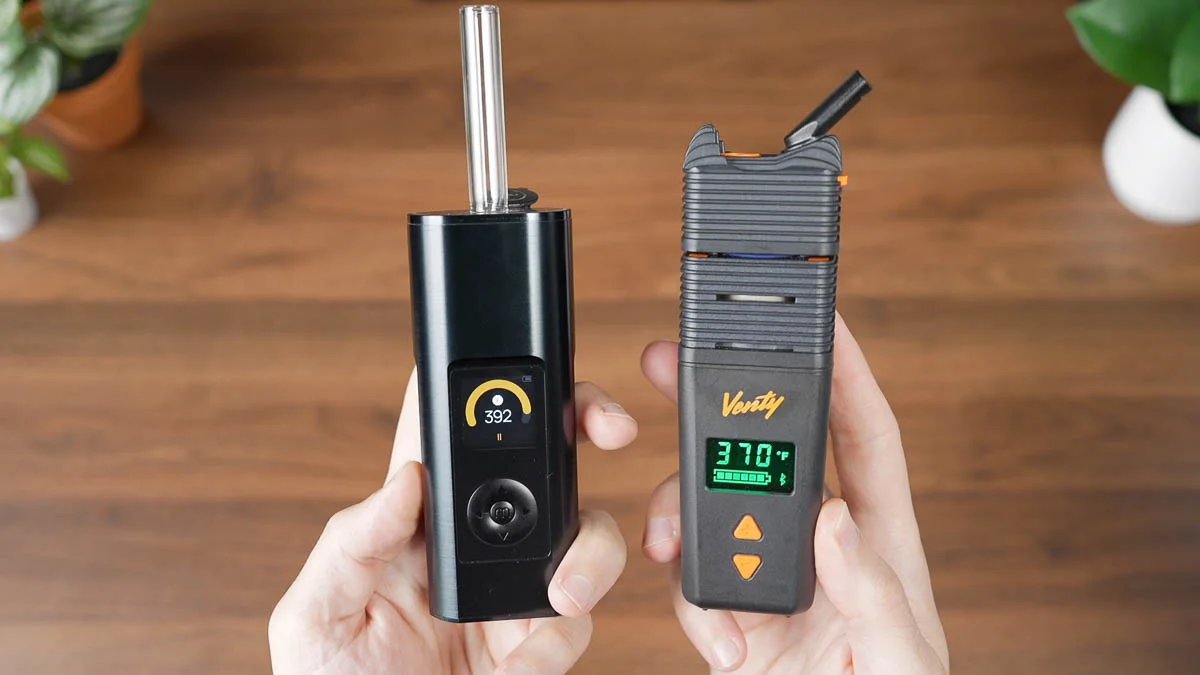



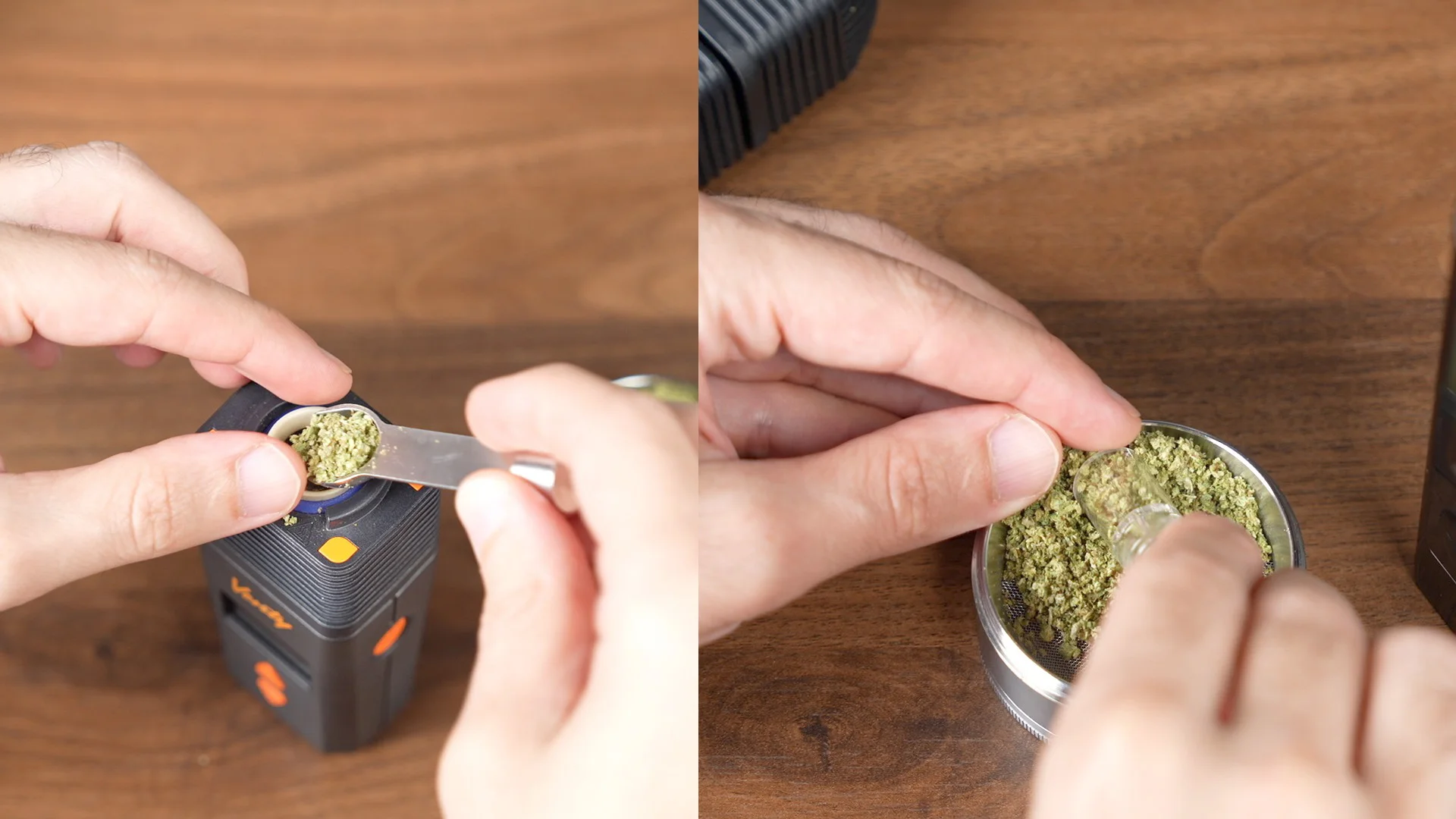
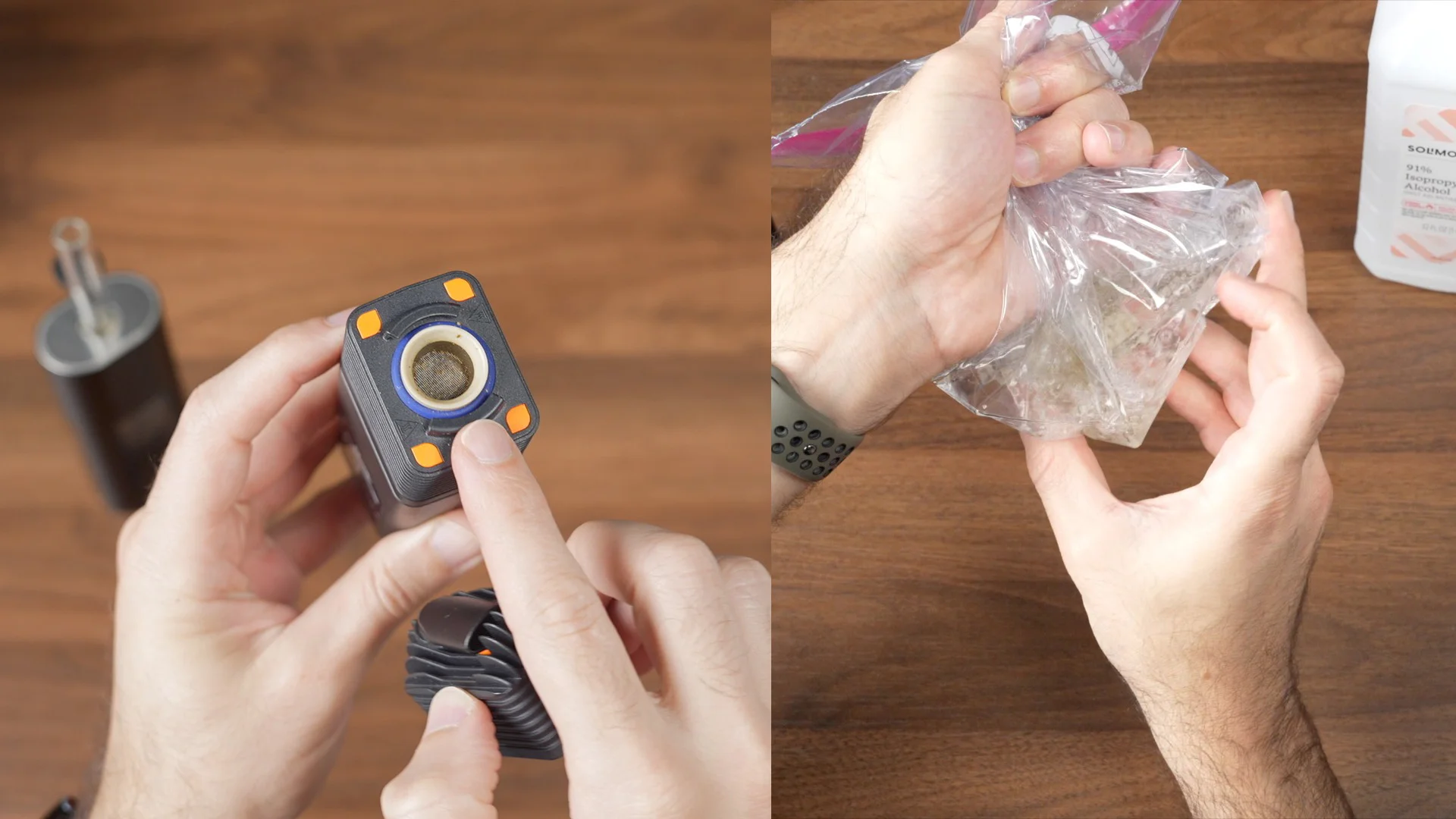


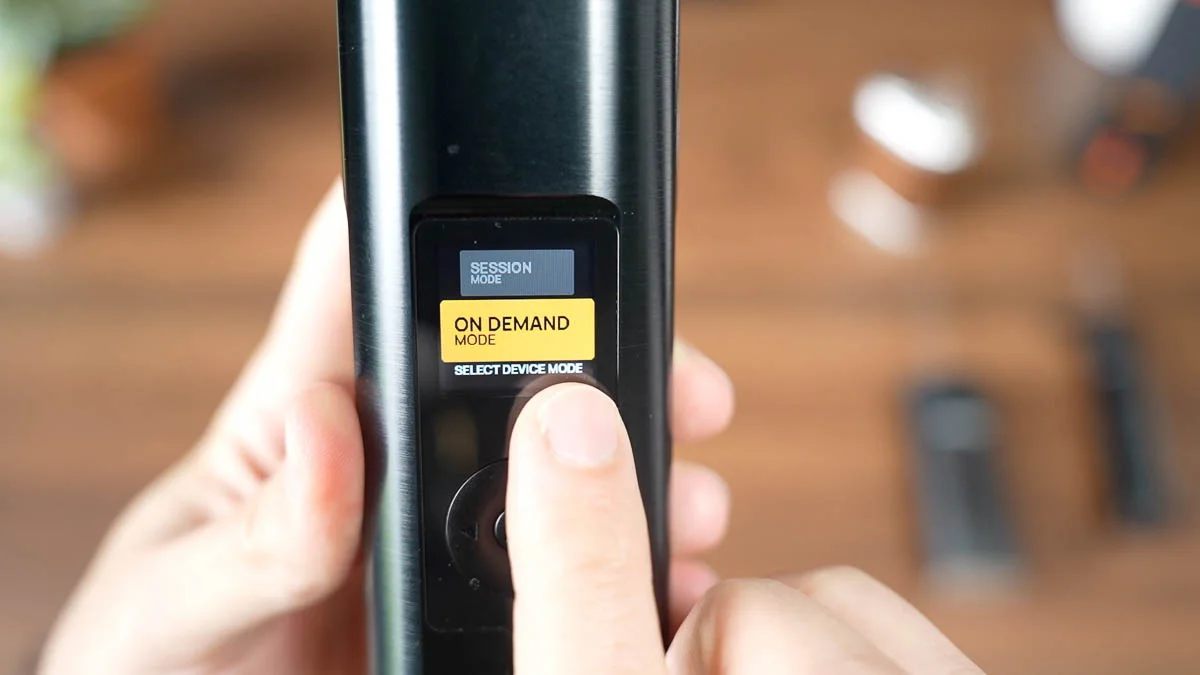





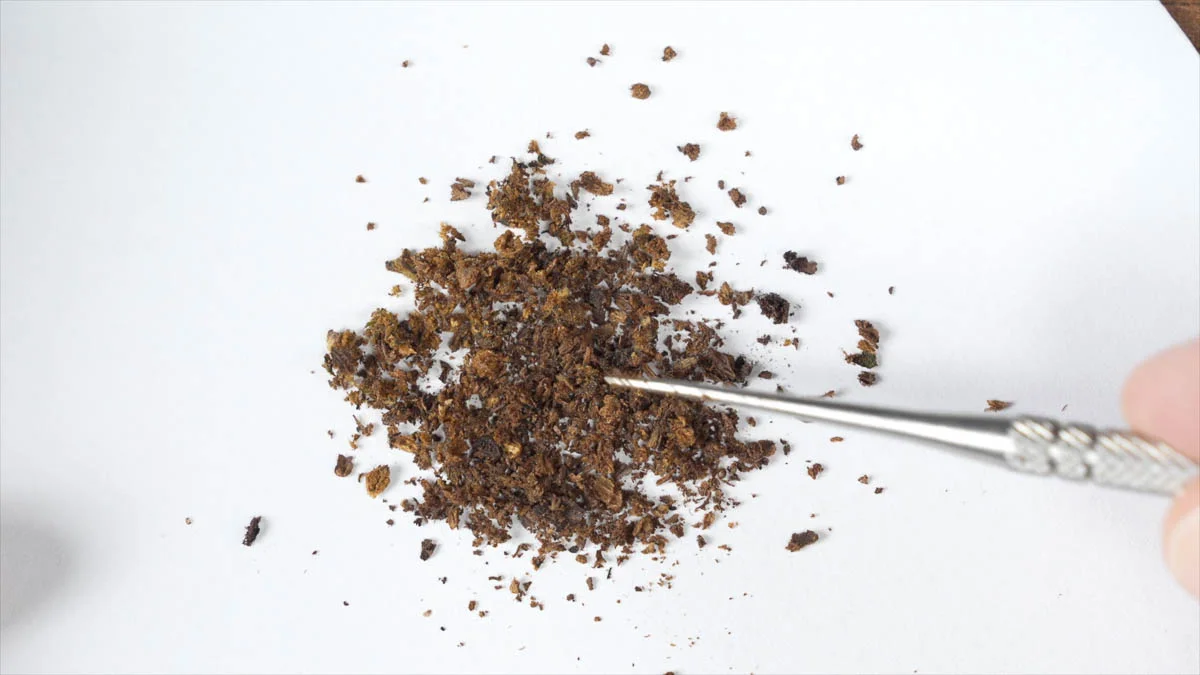











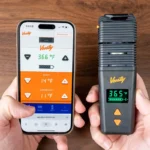










Comparison

Arizer Solo 3 (V2)
|

S&B Venty
|
||
|---|---|---|---|
| Score (1-5) |
- Current Review |
4.9 |
4.8 |
| Brand | - | Arizer | Storz & Bickel |
| Retail Price |
$344.00 |
$449.00 |
|
| Release Date | April 2025 | October 2023 | |
| Compatible With | - | Dry Herb, Aromatherapy | Dry Herb |
| Heating Method | - | 80% Convection / 20% Conduction | Hybrid |
| Vaping Style | - | Session + On-demand | Session |
| Body Material | - | Aluminum | PEEK |
| Mouthpiece Material | - | Glass | PEEK |
| Heat Up Time | - | 15 Seconds | 20 Seconds |
| Precise Temp Control | - | ✓ | ✓ |
| Temperature Range | - | 122-428°F | 104-410°F |
| Oven Capacity | - | 0.5 | 0.25 |
| Oven Material | - | Glass | Ceramic |
| Glass Compatible | - | ✓ | ✗ |
| Battery Type | - | Internal | Internal |
| Sessions Per Charge | - | 9-12 | 8-12 |
| Charge Time | - | 3-4 Hours | 1 Hour |
| Charger Type | - | USB-C | USB-C |
| Passthrough Charging | - | ✓ | ✗ |
| Display Type | - | Multicolor | LCD |
| Smartphone App | - | ✗ | ✓ |
| Firmware Updates | - | ✗ | ✓ |
| Adjustable Airflow | - | ✗ | ✓ |
| Warranty | - | 2 Years | 3 Years |
Overview
The two best dry herb vaporizers in the world right now are the Solo 3 and the Venty. Both are made by pioneering brands that have been around since the early days and have played a key role in shaping the form and function of modern portable vaporizers. In his review, I'll compare the two and rank them in several different categories so you can decide which one is best for your needs. I'll use a scoring system where each vape gets a “bud” according to its performance in that category.

Size & Shape.
Both vapes are on the larger side and are what I consider to be “home portables.” Sure, you can still take them out of the house. I do sometimes, but they are not exactly discreet or fit in a pocket. I give one “bud” here for the Venty as it is a tiny bit more pocketable and easier to use out of the house.

Dosing capsules
Both vapes have some type of capsule-dosing system. The Venty uses small capsules that can be pre-packed and dropped in the chamber, and Arizer uses the stems as capsules, so you can cap them and use them as needed.

Durability
The Venty is made from PEEK, which feels like the surface of an MRI machine, to be honest 😂 . The thing feels very sturdy and unbreakable. The Solo 3 is made from brushed steel or Aluminum, but the glass stems make it a little more fragile. One “bud” to Venty here.

Ease of use
As far as loading, there is an edge here to Solo 3, in my opinion. You don't need a spoon, and the herb is not even loaded directly into the vape. It's as easy and mess-free as it can be. Solo gets a “bud”.
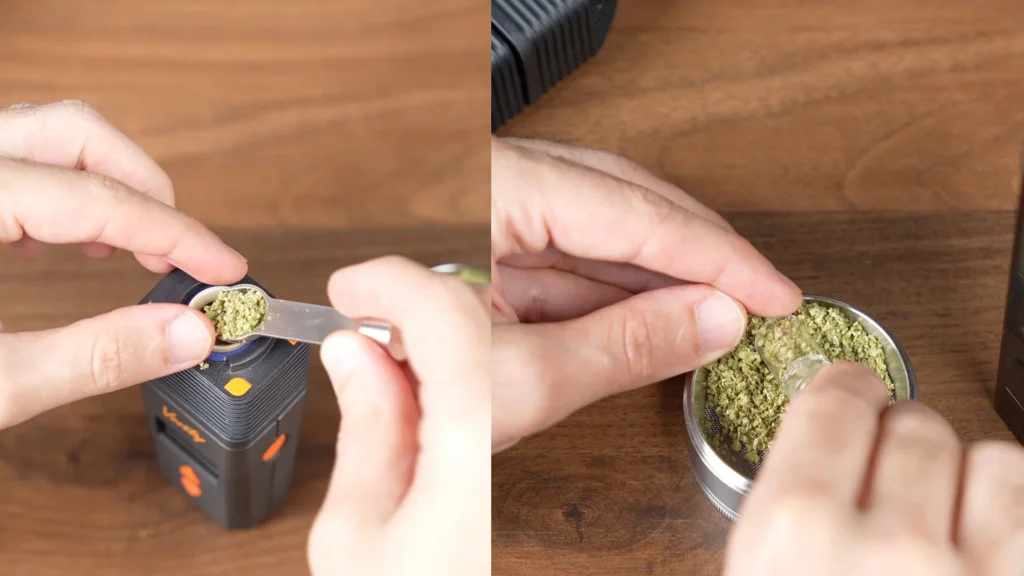
Cleaning & mainatance
When it comes to maintenance, the two parts that require the most cleaning are, with every vape, the chamber, and the mouthpiece.
The Venty has a cooling unit that can be opened and cleaned once every few weeks, and of course, the chamber also benefits from occasional cleaning with ISO or alcohol wipes.

The Solo 3 only has the stem that gets dirty and maybe a small swab on the actual chamber every few uses. I drop the stem in a ziplock with some ISO and salt, shake, rinse with hot water, and dry with a paper towel.
The Solo 3 is easier to clean as there is no colling unit or other components, only the glass stem. One “bud.”

Interface & on-demand mode
Both vapes offer a simple and intuitive interface with an onboard display and controls. The Venty also has a compatible web app, allowing you to customize everything about the device. The Solo 3 allows you to change all the settings onboard. So, no “buds” are given here.

The Solo 3 has a new “on-demand” mode that only activates heat as you inhale. This means that one bowl can be split into multiple mini-sessions, and you can take a hit, come back an hour later, and take another hit. This is not possible with the Venty, which is a session vaporizer. The chamber stays hot during the entire session, and you can inhale as much as you want. At the end of the session, the herb has to be discarded.

Two “buds” here to the Solo, as it supports both modes, and both work perfectly.
Airflow control
But the Venty also has an exclusive feature up its sleeve- airflow control. The mouthpiece has a dial that can open or restrict the airflow. Controlling the airflow gives you another dimension of control and customization. We each inhale at different speeds, and the Venty can adjust to your inhale speed, versus the Solo 3, in which you'd have to adjust your inhale to match its airflow rate and draw resistance. One “bud” to the Venty here.

Performance & Vapor Quality
It's so hard to say which has the better flavor, so I'd call this a tie. Both vapes offer the best vapor quality of any portable.

Another tie is the battery life. Both vapes offer best-in-class performance here, too, with around ten sessions on a full charge. Both vapes charge with USB-C.
Vapor Production
Vapor Production is another category that's very hard to measure, but let's try. I loaded both vapes with the same herb, which was processed through the same grinder, and I used both vapes at 380°F.
This is the vapor production of the Venty.

And this is the vapor production of the Solo 3.

Extraction efficiency
Both vapes use a combo of mostly convection and some conduction to heat up the herb. Conduction heat keeps the chamber and herb warm, and hot air (convection) is pulled through with each inhale to extract the active compounds as inhalable vapor.
This system works very well with both vapes, and the extraction is excellent.
Here is how the AVB of the Venty looks after a 10-minute session at 380°F. It is brown and crunchy, and there are no color differences between different parts of the chamber. The extraction is even and efficient.

And here is how the AVB of the Solo 3 looks with the same temp and session duration. The herb at the bottom of the stem gets “cooked” more than the rest of the stem because it is closer to the heating element. That's part of the reason why I recommend leaving a gap of 1-2mm when packing the stems.

Here, I give the Venty a slight edge and one “bud.” The wide chamber distributes the heat more evenly. But on both vapes, the extraction is top-notch, and the herb is fully cashed at the end of a session.
Chamber capacity
As far as oven capacity, the Venty is in between the two sizes of the Arizer Stems. It is larger than the regular size, while it is slightly smaller than the XL stems. One “bud” for the Solo as it has two “oven sizes.”
Overall Value
The Venty retails for $420, and the Solo 3 retails for $344. I have coupon codes for both products on the review pages, which will save you 10% on the Venty and 20% on the Solo 3. But needless to say, these vapes are expensive. It's not an easy purchase for most people and is undoubtedly an investment. One “bud” here for the Solo 3, as it is $70 cheaper and provides a great price/performance ratio.

Bottom line
Ok, so weighing in the buds here, the Solo 3 comes slightly ahead, but don't get caught up with looking for one “ultimate” best. The right vape for your needs depends on how much weight YOU put on each feature.
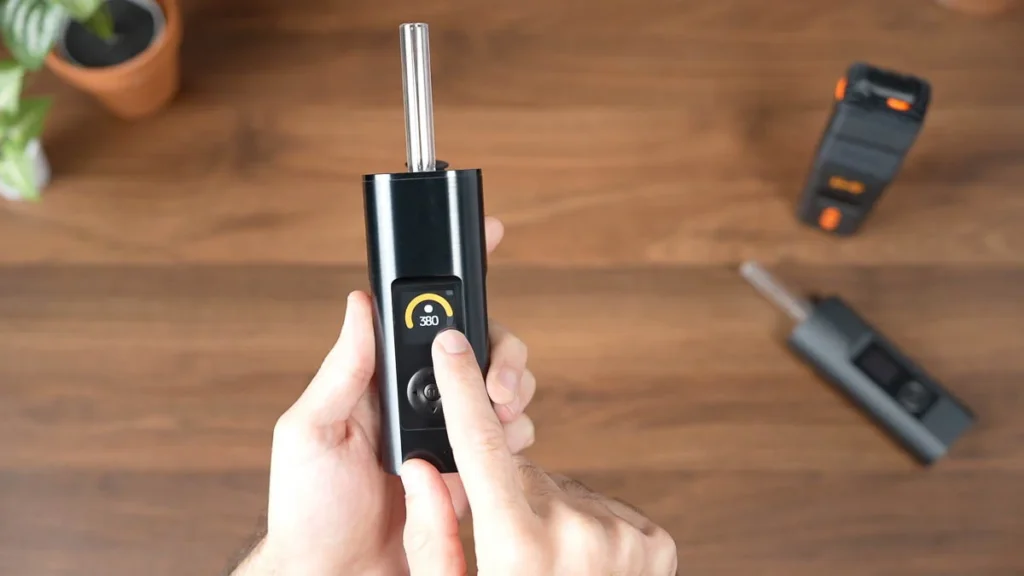
With both of these vapes, you can't go wrong. A good vape can become your best friend and reward you with years of enjoyment.

If you're serious about vaporizing your herb, buying a premium vape like one of these two makes a lot of sense and will most likely save you money in the long run.
I've seen so many people buy a cheap vape, get disappointed with it, and go right back to combustion, thinking vaporizers are just not for them. Where the issue was, the vape that they were using.
Hopefully, this article gave you some direction on which vape is better for your needs.